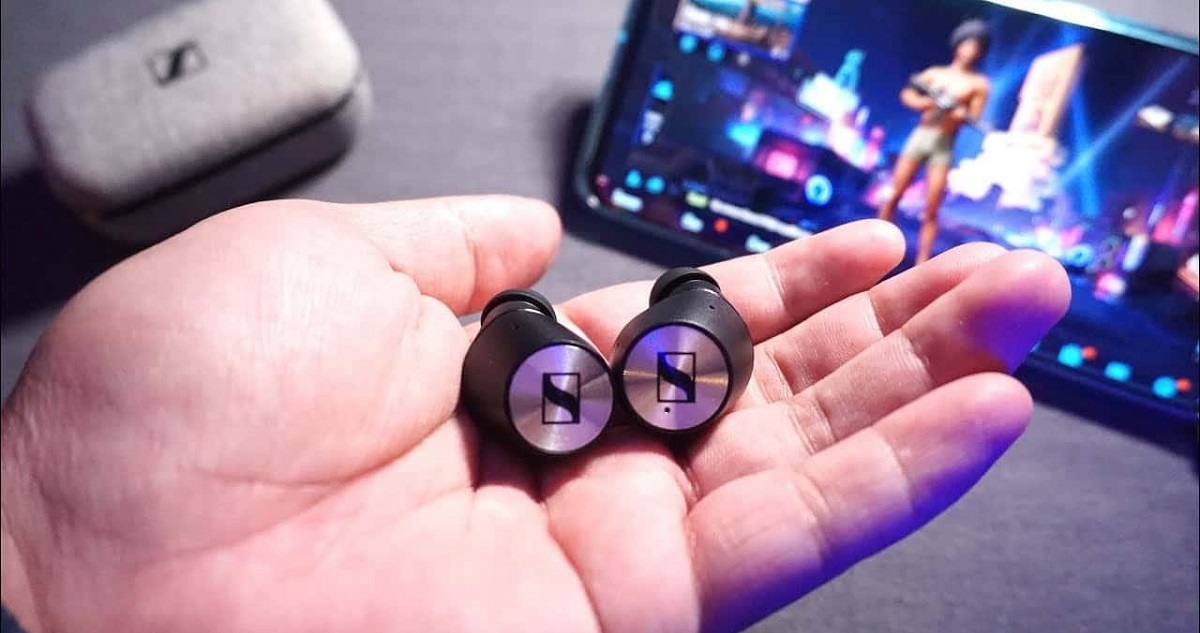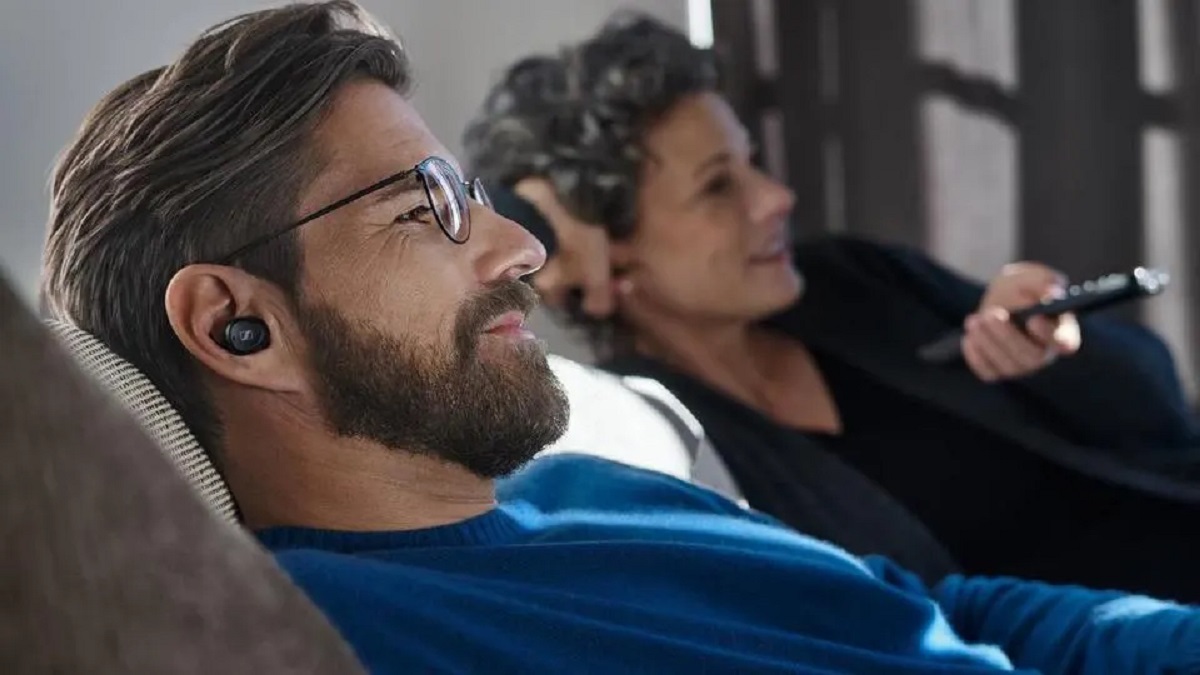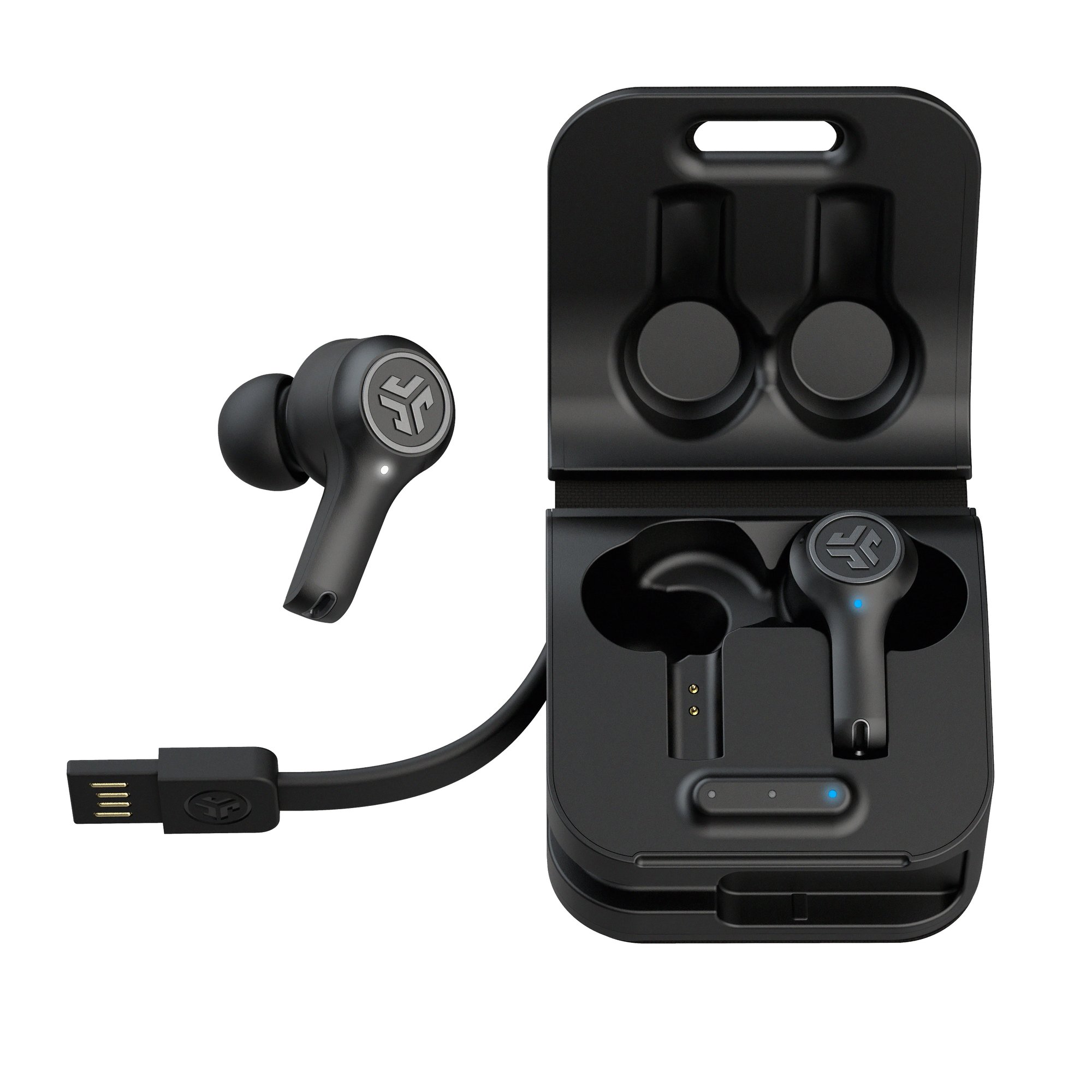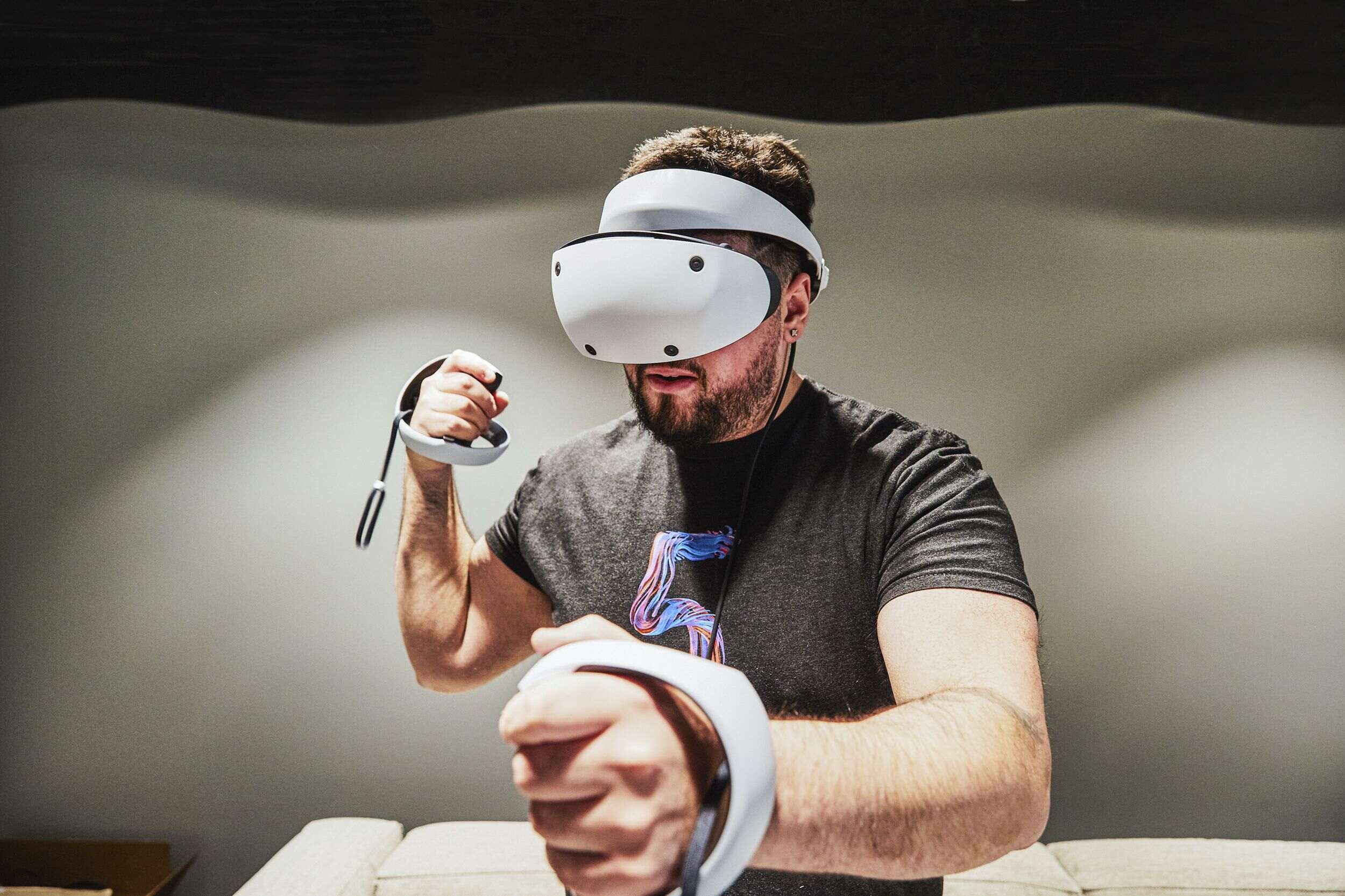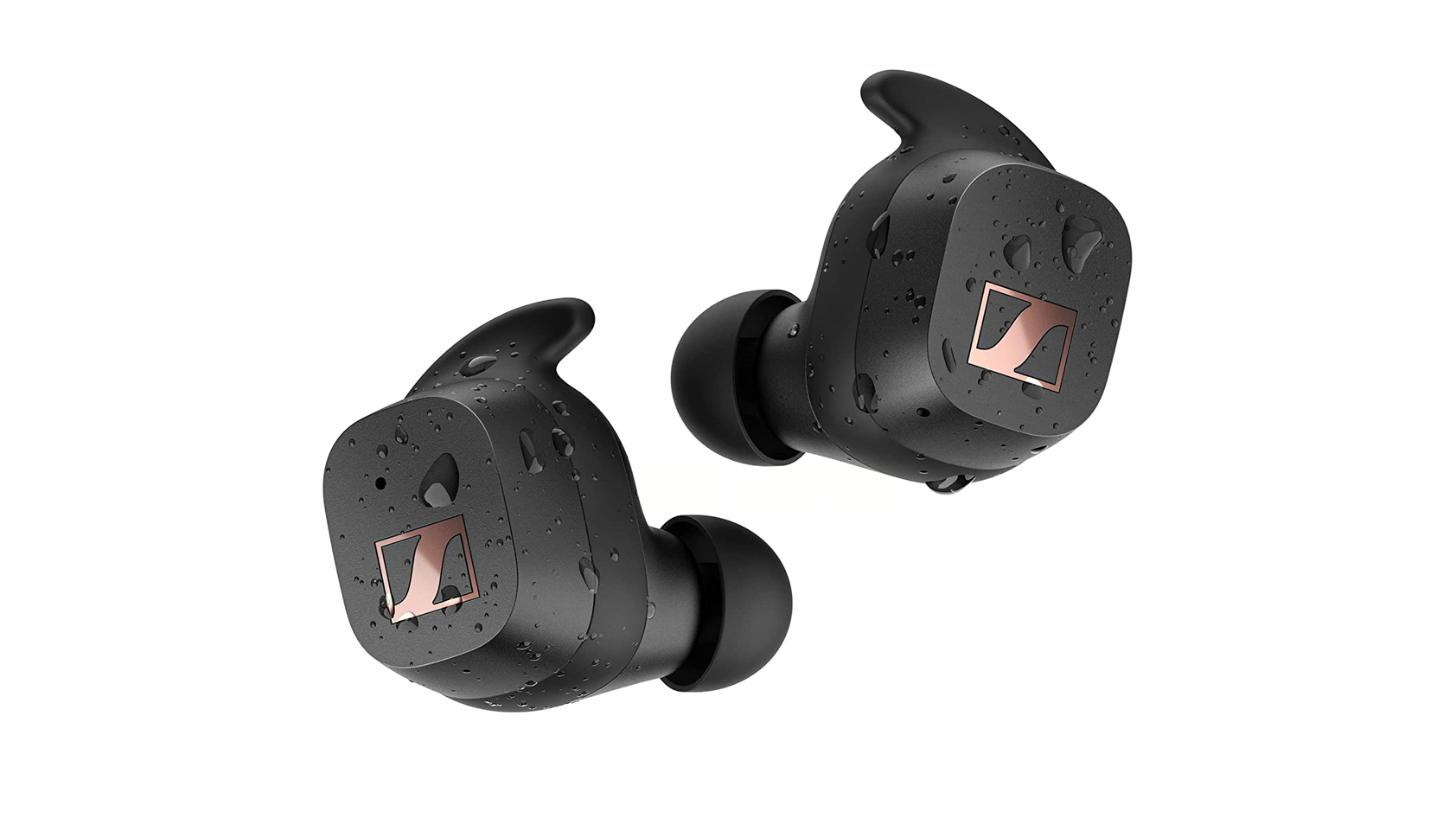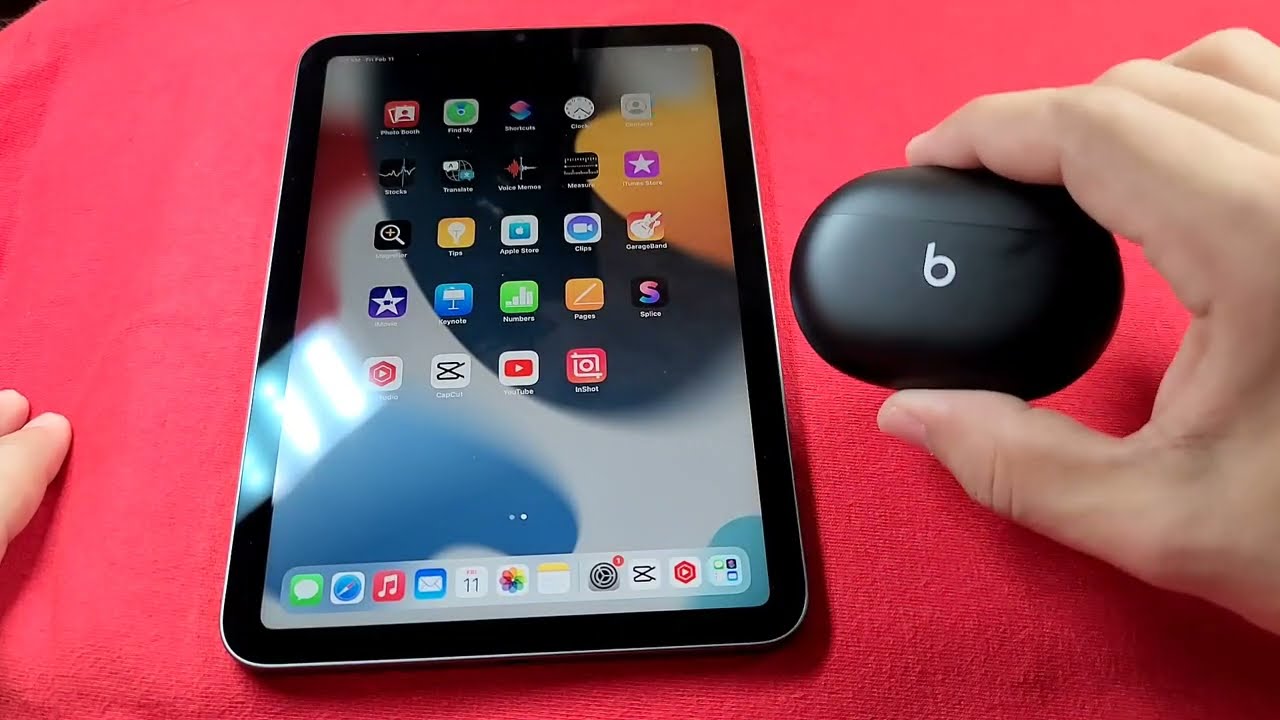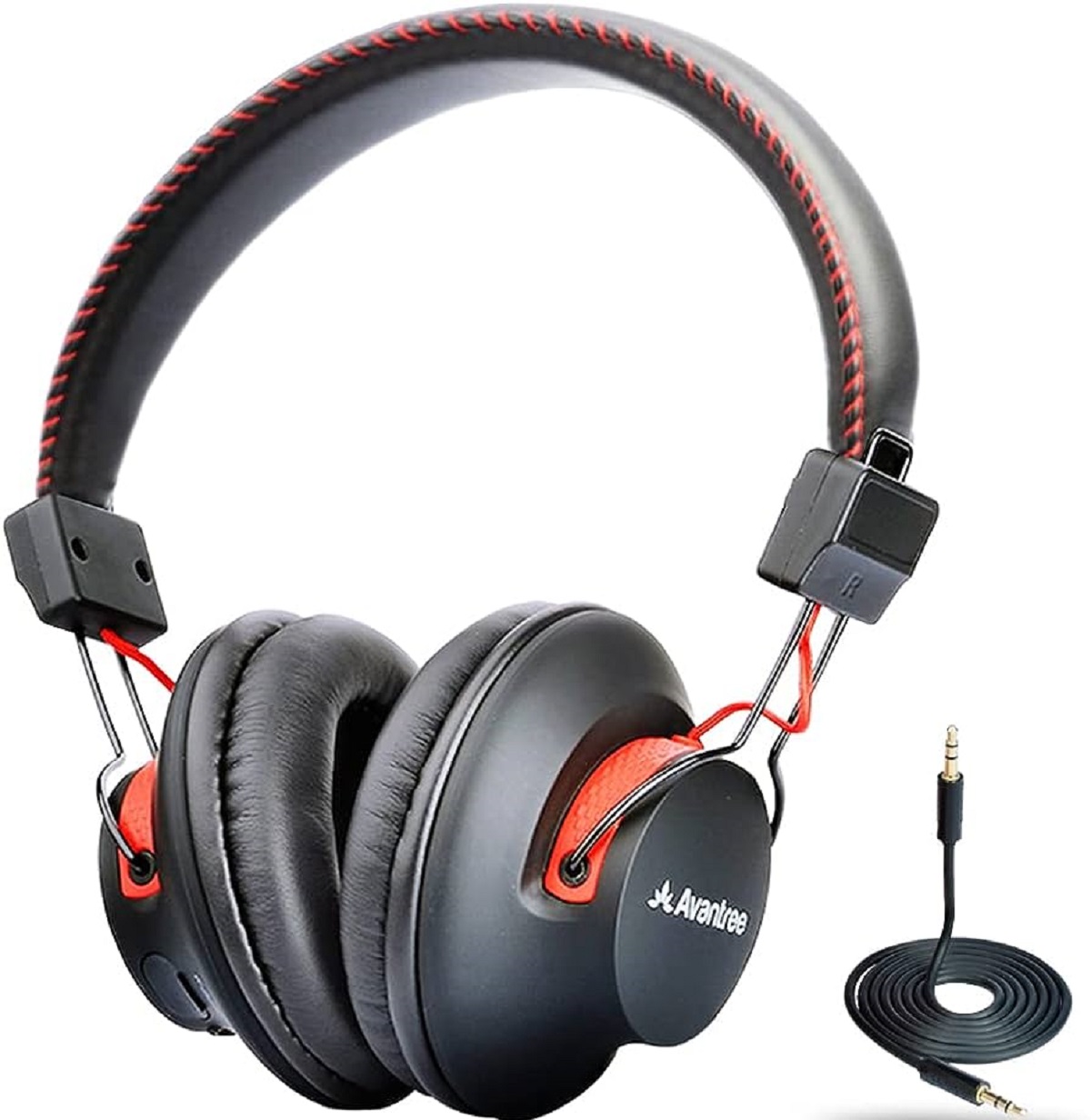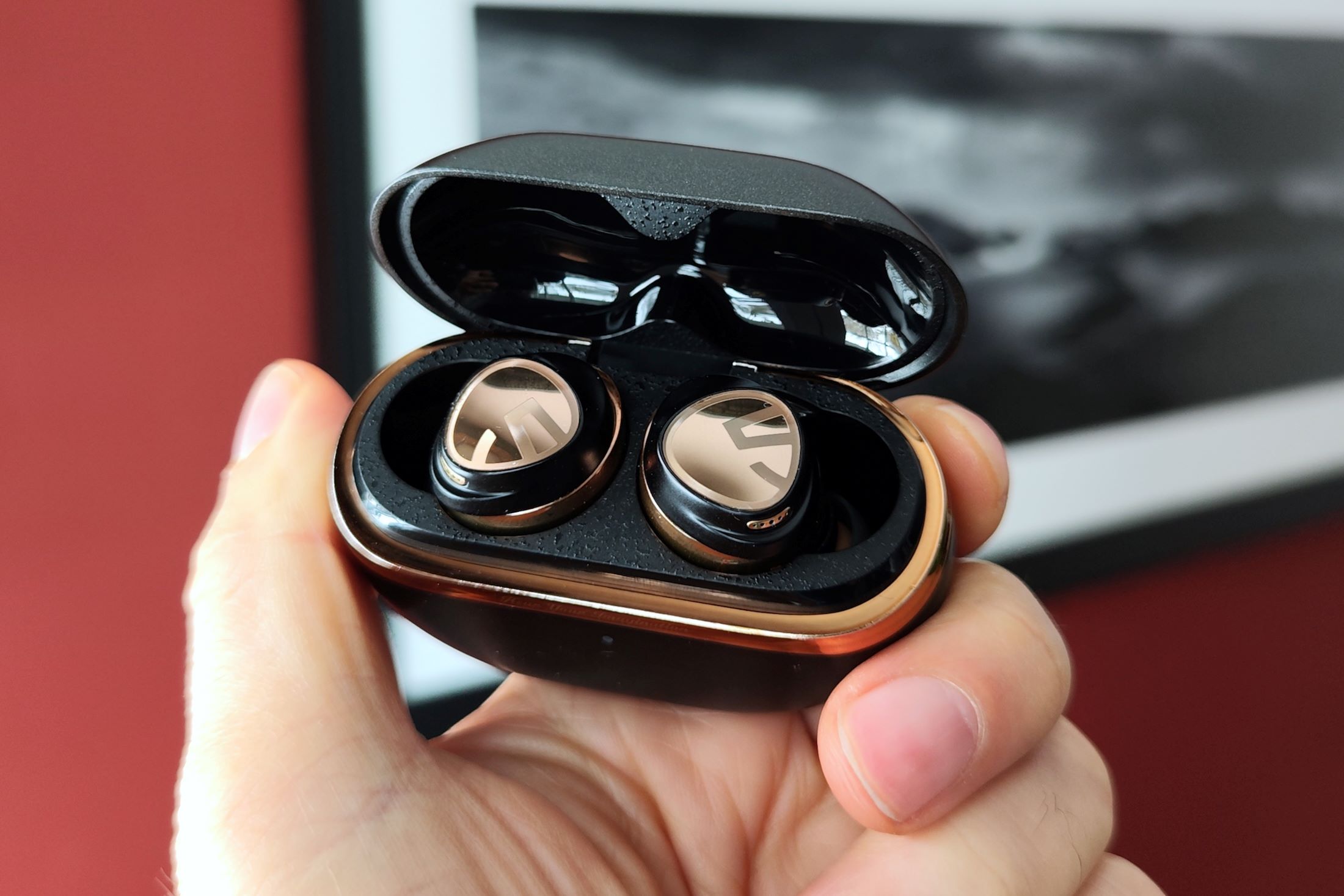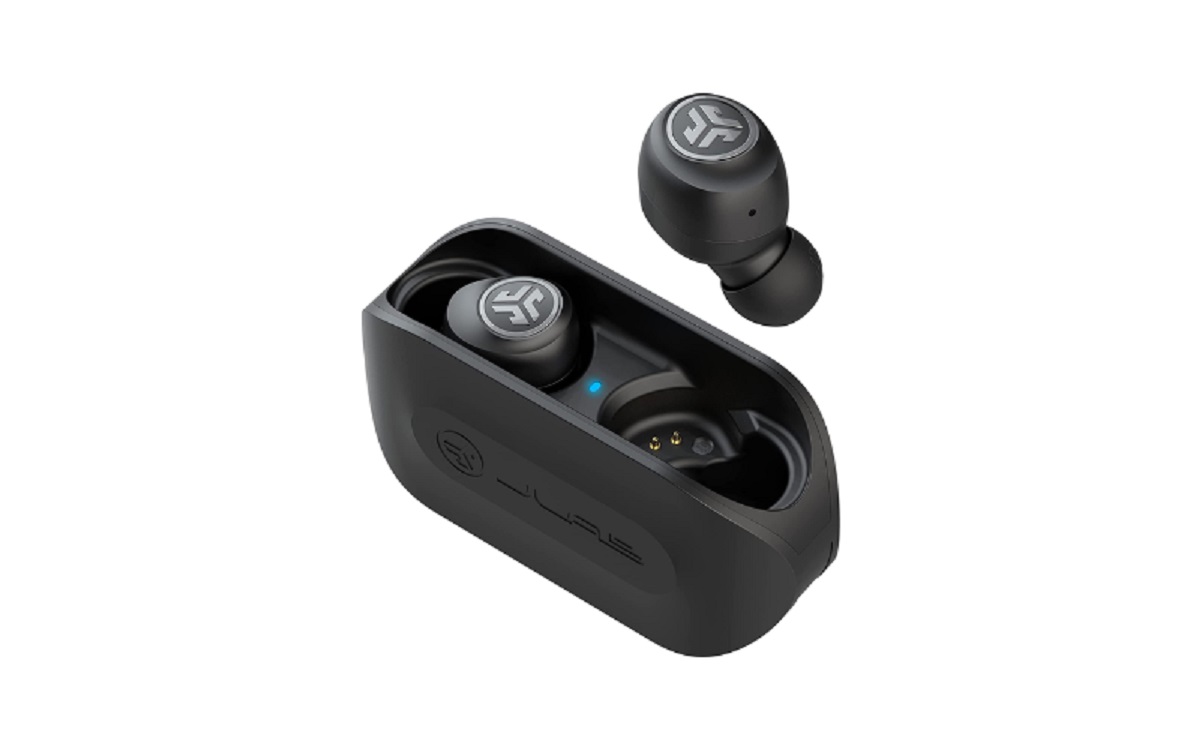Introduction
Welcome to our guide on how to fix delay on wireless earbuds. As technology continues to evolve, wireless earbuds have become increasingly popular for their convenience and portability. However, one common issue that users may encounter is audio delay, where the sound is not synced properly with the video or other audio sources.
This delay can be frustrating, especially when you’re trying to enjoy your favorite music, podcasts, or movies. Fortunately, there are several troubleshooting steps you can take to minimize or eliminate the delay and optimize your wireless earbud experience.
In this article, we will provide helpful tips and techniques to diagnose and resolve delay issues on your wireless earbuds. We will explore the common causes of audio delay, guide you through the troubleshooting process, and suggest potential solutions to fix the problem. Whether you’re using Apple AirPods, Samsung Galaxy Buds, or any other wireless earbuds, the methods outlined here can be applied universally.
Before we dive into the troubleshooting steps, it’s important to note that the delay issue can be caused by various factors, including the Bluetooth connection, device settings, and interference from other electronics. By understanding these potential causes, you can effectively troubleshoot and resolve the delay problem to improve your overall audio experience.
So, if you’re ready to tackle the audio delay on your wireless earbuds and enjoy seamless audio syncing once again, let’s get started!
Understanding the Delay on Wireless Earbuds
Before we delve into troubleshooting the delay issue, it’s essential to understand what causes audio delay on wireless earbuds. The delay occurs when there is a noticeable time gap between the visual content (such as videos) and the sound produced by the earbuds.
One primary cause of audio delay is the time it takes for the wireless signal to transmit from the audio source (e.g., smartphone, tablet, or computer) to the earbuds. This delay is commonly referred to as “latency”. In wireless communication, several factors can contribute to latency, resulting in the audio lag:
- Bluetooth Codec: The codec used by your earbuds and the audio source can impact latency. Certain codecs, such as SBC (Subband Coding), may introduce more delay compared to others, like aptX or AAC.
- Bluetooth Version: Older Bluetooth versions, such as Bluetooth 4.2, tend to have higher latency compared to the newer Bluetooth 5.0 or 5.1 versions.
- Distance and Interference: Your earbuds’ connection quality can be affected by the distance between the audio source and the earbuds. Additionally, obstacles like walls, electronic devices, or other wireless signals can cause interference and increase latency.
- Hardware and Firmware: The design and internal components of the earbuds, as well as the firmware running on them, can contribute to latency. Low-quality components or outdated firmware may result in higher delay.
It’s important to note that some degree of delay is unavoidable in wireless audio transmissions due to the nature of the technology. However, manufacturers strive to minimize latency in their wireless earbud models, and the steps we will cover in the following sections can help alleviate the delay to a more acceptable level.
Now that we have a basic understanding of what causes audio delay on wireless earbuds, let’s move on to troubleshooting the issue and finding potential solutions. Keep in mind that not all of the solutions might work for your specific situation, so it may require some trial and error to find the most effective fix.
Common Causes of Delay on Wireless Earbuds
When facing audio delay on your wireless earbuds, it’s essential to identify the underlying causes. By understanding the common culprits behind the delay, you can pinpoint the specific issue and implement the appropriate solution. Here are some of the most prevalent causes:
- Bluetooth Connection: A weak or unstable Bluetooth connection can contribute to audio delay. If the signal strength is low or there are interruptions in the connection, the audio data may not transmit swiftly, resulting in a noticeable lag.
- Audio Codec: The codec used to compress and decompress the audio data can affect the latency. Some codecs, such as the standard SBC codec, tend to introduce more delay than others like AAC or aptX.
- Device Settings: In some cases, the audio and video settings on your device can cause delay issues. Incorrect settings related to synchronization, audio output, or video playback can result in a noticeable lag between the audio and visual components.
- Interference: Other electronic devices or Wi-Fi signals in the vicinity can disrupt the Bluetooth connection and introduce delay. Physical obstructions like walls and obstacles can also interfere with the wireless signal, impacting the audio synchronization.
- Firmware and Software: Outdated firmware or software on your wireless earbuds or audio source can contribute to latency. Manufacturers often release updates to optimize performance and reduce delay, so it’s important to check for and install any available updates.
It’s worth mentioning that the severity of audio delay can vary depending on the specific earbud model and the combination of devices being used. Some earbuds may inherently have lower latency due to advanced technology and optimized designs.
By identifying these common causes, you can narrow down the possible issues and focus on troubleshooting them effectively. In the next section, we will explore various troubleshooting techniques to help you fix the delay on your wireless earbuds and restore seamless audio synchronization.
Troubleshooting Delay Issues
Experiencing delay issues with your wireless earbuds can be frustrating, but fortunately, there are several troubleshooting techniques you can try to resolve the problem. By following these steps, you’ll have a better chance of eliminating or minimizing the audio delay. Let’s dive into the troubleshooting process:
- Ensure a Strong and Stable Bluetooth Connection: Start by ensuring that your earbuds are properly connected to the audio source. Keep the device within the recommended range and remove any obstructions that may interfere with the Bluetooth signal. Additionally, avoid overcrowded Wi-Fi networks or other devices that may cause interference.
- Update Firmware or Software: Check for any available firmware or software updates for both your earbuds and the audio source. Manufacturers often release updates to improve performance and address latency issues. Install the latest updates to optimize the syncing between audio and video.
- Adjust Audio and Video Settings: Explore the audio and video settings on your device to ensure they are configured correctly. Look for options related to audio delay or synchronization and make adjustments accordingly. Experimenting with different settings may help in aligning the audio and visual components.
- Try Different Pairing Methods: Some earbuds support different pairing methods, such as connecting via USB instead of Bluetooth. If available, try alternative pairing methods to see if they reduce the delay. Keep in mind that this option may not be supported by all earbud models.
- Reduce Interference and Distance: Minimize potential interference by moving away from other electronic devices or Wi-Fi signals. Decreasing the distance between the audio source and the earbuds can also improve the connection strength and reduce latency. Try staying in the same room or keeping the devices closer together.
- Reset or Restart the Earbuds: Performing a reset or restart on your earbuds can sometimes resolve connectivity issues and improve synchronization. Refer to the manufacturer’s instructions for the specific steps to reset or restart your earbuds.
- Use a Different Device to Test: To rule out any device-specific issues, try pairing your earbuds with a different audio source. If the delay issue persists across various devices, it indicates a problem with the earbuds themselves. However, if the delay is resolved on a different device, there may be a compatibility issue with the original audio source.
- Consult the Manufacturer or Support: If none of the above troubleshooting steps resolve the delay issue, it’s recommended to reach out to the manufacturer for further assistance. They may provide specific recommendations or offer solutions to address the problem you’re facing. Be sure to provide them with all the necessary details about your earbuds and the circumstances related to the delay.
By following the troubleshooting techniques mentioned above, you will be well-equipped to diagnose and resolve delay issues with your wireless earbuds. Implementing these steps in a systematic manner will help you narrow down the specific cause and find an effective solution. However, keep in mind that every situation can be unique, and the best approach may vary from one user to another.
Now that we’ve explored various troubleshooting methods, it’s time to put them into practice and fix the delay on your wireless earbuds for an optimal audio experience.
Ensure a Strong and Stable Bluetooth Connection
A strong and stable Bluetooth connection is crucial for minimizing audio delay on wireless earbuds. If the Bluetooth connection is weak or unstable, it can result in a noticeable lag between the audio and video components. Here are some steps to ensure a robust Bluetooth connection:
- Stay within the Bluetooth Range: Make sure that your earbuds and the audio source are within the recommended Bluetooth range. Generally, the range can be up to 33 feet (10 meters), but it may vary depending on the devices. Moving closer to the audio source can improve the connection strength and reduce latency.
- Remove Obstructions: Keep the path between the audio source and the earbuds as clear as possible. Physical obstacles like walls, furniture, or other electronic devices can interfere with the Bluetooth signal and introduce delay. By minimizing obstructions, you can improve the connection quality and reduce latency.
- Avoid Interference: Bluetooth signals can be affected by other wireless devices, such as Wi-Fi routers, cordless phones, or microwave ovens. Try to minimize the use of such devices or keep them at a distance from your audio source and earbuds. This can reduce potential interference and improve the Bluetooth connection stability.
- Charge Your Devices: Low battery levels can weaken the Bluetooth signal and lead to increased latency. Ensure that both your audio source and wireless earbuds have sufficient battery life for optimal performance. If possible, charge them fully before using them to minimize any potential connectivity issues.
- Reset Bluetooth Connections: If you’re experiencing persistent connection problems or latency, try resetting the Bluetooth connections on both your audio source and earbuds. Disable and enable Bluetooth on your device, then unpair and pair the earbuds again. This can help refresh the connection and resolve any temporary glitches.
By following these steps, you can ensure a strong and stable Bluetooth connection, which is crucial for minimizing delay issues on your wireless earbuds. However, if the audio delay persists despite these efforts, further troubleshooting may be required to identify and resolve the underlying cause.
Now that you have learned how to ensure a robust Bluetooth connection, let’s move on to the next troubleshooting step to fix the delay on your wireless earbuds.
Update Firmware or Software
Updating the firmware or software on your wireless earbuds and audio source is an important step in troubleshooting audio delay issues. Manufacturers often release updates to improve performance, optimize synchronization, and address latency problems. Here’s what you can do to ensure you have the latest firmware or software:
- Check for Updates: Visit the manufacturer’s website or app for your earbuds and audio source to see if there are any available firmware or software updates. Look for release notes or update notifications that specifically mention improvements in audio syncing or latency reduction.
- Follow Update Instructions: Once you have confirmed that updates are available, carefully read and follow the provided instructions to install them. The process may vary depending on the earbud model and the audio source’s software. Be sure to adhere to the correct update procedure to avoid any potential issues.
- Charge Your Devices: Before initiating the update, ensure that both your wireless earbuds and your audio source have sufficient battery charge. Keeping them adequately powered during the update process prevents unexpected power loss that could potentially affect the update or cause further connectivity issues.
- Perform the Update: Connect your earbuds to the audio source and initiate the firmware or software update as instructed. It may take a few minutes for the update to complete, and during this process, it’s important not to interrupt or disconnect any cables. Follow the on-screen prompts and wait for the update to be successfully installed.
- Test for Improved Syncing: After updating the firmware or software on both your earbuds and audio source, test them to see if the audio delay has been resolved or reduced. Watch a video or play music and assess the synchronization between the audio and visual components. If the delay persists, you may need to explore other troubleshooting steps.
Updating the firmware or software helps ensure that you have the latest features and optimizations to minimize audio delay on your wireless earbuds. By following these steps, you can maximize the performance and synchronization of your earbuds and enhance your overall audio experience.
If updating the firmware or software does not resolve the delay issue, don’t worry. In the next section, we will explore additional techniques to troubleshoot and fix audio delay on your wireless earbuds.
Adjust Audio and Video Settings
Adjusting the audio and video settings on your device can help resolve audio delay issues on your wireless earbuds. Incorrect settings related to audio output or video playback synchronization can result in noticeable lag between the two components. Here are some steps to adjust these settings:
- Audio Delay/Synchronization: Check if your device has an option to adjust audio delay or synchronization. This setting allows you to manually align the audio and video components. In some cases, there may be a specific setting for Bluetooth audio delay. Experiment with different delay values until you find the setting that improves the synchronization with your wireless earbuds.
- Volume Balance: Imbalanced volume levels between the left and right earbuds can create the perception of audio delay. Ensure that the volume balance is properly configured for your wireless earbuds. Some devices allow you to adjust the left/right audio balance or separately control the volume for each earbud. Check the audio settings and make adjustments accordingly.
- Streaming Quality: If you’re experiencing significant delay while streaming content, consider reducing the video quality. Lower-resolution videos typically require less data to be transmitted, resulting in a faster and more synchronized playback. However, keep in mind that reducing the video quality may impact the overall viewing experience, so find a balance that works for you.
- Audio Codec: Check if your earbuds support different audio codecs, such as AAC or aptX. Some codecs have lower latency than others. If your device and earbuds support a low-latency codec, ensure that it is enabled for optimal performance. Refer to the manufacturer’s instructions or documentation to find out which codecs are supported and how to enable them.
- Video Player Settings: If the audio delay is specific to a certain video player app, explore the settings within the app. Some video player apps have audio synchronization options that can help mitigate the delay. Look for options like “audio sync”, “audio delay”, or similar terms and adjust the settings accordingly.
By adjusting the audio and video settings on your device, you can fine-tune the synchronization between the audio and video components, reducing or eliminating the audio delay on your wireless earbuds. Experiment with different settings to find the optimal configuration for your specific setup.
If adjusting the audio and video settings doesn’t resolve the delay issue, don’t worry. In the next section, we will explore additional troubleshooting techniques to help fix audio delay on your wireless earbuds.
Try Different Pairing Methods
If you’re experiencing audio delay on your wireless earbuds, trying different pairing methods can sometimes help resolve the issue. Different pairing methods can provide alternative ways to establish a connection between your earbuds and the audio source, potentially reducing the latency. Here are some pairing methods worth exploring:
- Bluetooth Pairing: The most common method is to pair your earbuds with the audio source using Bluetooth. However, some earbuds support different Bluetooth versions, such as Bluetooth 4.2, 5.0, or 5.1. Upgrading to a newer Bluetooth version, if compatible with your earbuds and audio source, can potentially reduce the audio delay.
- USB Connection: Some wireless earbuds support USB connectivity, allowing you to directly connect them to the audio source using a USB cable. This method bypasses Bluetooth altogether, potentially minimizing any latency introduced by Bluetooth audio transmission. Check if your earbuds support this feature and if your device has a USB port for connection.
- Alternative Audio Connections: If available, consider using alternative audio connections like a headphone jack or an adapter. This method works well for devices that have a headphone jack or support audio output through other ports. By using a direct wired connection, you can avoid any potential latency issues caused by wireless transmission altogether.
- Multi-Device Pairing: Some earbuds support pairing with multiple devices simultaneously. This allows you to easily switch between devices without the need for repeated pairing. If you often switch between different devices, such as your smartphone and computer, try pairing your earbuds with both devices to see if it reduces the audio delay.
It’s important to note that not all wireless earbuds support these alternative pairing methods. Additionally, the availability of these options may depend on the specific device and earbud models you are using. Refer to the user manual or the manufacturer’s instructions to determine which pairing methods are supported and how to set them up.
By trying different pairing methods, you can experiment with alternative connectivity options that may help reduce audio delay on your wireless earbuds. Keep in mind that the effectiveness of these methods may vary depending on the specific earbud and device compatibility.
If trying different pairing methods doesn’t resolve the delay issue, don’t worry. In the next section, we will explore additional troubleshooting techniques to help fix audio delay on your wireless earbuds.
Reduce Interference and Distance
Interference and distance can play a significant role in causing audio delay on your wireless earbuds. By minimizing interference and decreasing the distance between your earbuds and the audio source, you can improve the connection quality and reduce latency. Here are some steps to achieve this:
- Reduce Nearby Interference: Other electronic devices and Wi-Fi signals in the vicinity can interfere with the Bluetooth connection, leading to audio delay. Try to minimize the use of devices like microwave ovens, cordless phones, or other Bluetooth devices that may compete for the same frequency. Additionally, keep your earbuds away from sources of strong electromagnetic fields.
- Clear Line of Sight: Position your earbuds and audio source in a way that provides a clear line of sight between them. Physical obstacles like walls or other objects can weaken the Bluetooth signal and contribute to latency. Optimal positioning can help reduce interference and boost the signal strength.
- Stay Within the Recommended Range: Be mindful of the recommended range for your wireless earbuds. Generally, the range can be up to 33 feet (10 meters), but it may vary depending on the specific earbud model. Staying within this range helps maintain a strong and stable connection, minimizing the potential for audio delay.
- Stay in the Same Room: If possible, keep the audio source and earbuds in the same room. This reduces the distance between them and improves the signal strength, leading to a more reliable connection and reduced latency. Avoid excessively long distances or multiple rooms that may introduce more potential for interference or signal loss.
- Minimize Bluetooth Device Overcrowding: If you have multiple Bluetooth devices in close proximity, they can interfere with each other and cause audio delay. Consider turning off or moving any unused Bluetooth devices away from your earbuds and audio source. This helps minimize interference and enhances the overall connection quality.
By reducing interference and decreasing the distance between your earbuds and the audio source, you can optimize the Bluetooth connection and minimize audio delay. These steps are simple yet effective in improving the synchronization between the audio and visual components.
If reducing interference and distance does not resolve the delay issue, don’t worry. In the next section, we will explore additional troubleshooting techniques to help fix audio delay on your wireless earbuds.
Reset or Restart the Earbuds
Resetting or restarting your wireless earbuds can sometimes resolve connectivity issues and improve synchronization, reducing audio delay. Over time, minor glitches or software conflicts can occur, causing latency problems. Here’s how you can reset or restart your earbuds:
- Refer to the User Manual: Consult the user manual or documentation provided by the manufacturer to determine the specific reset or restart procedure for your earbuds. Different models may have different methods, such as button combinations or specific steps to follow.
- Perform a Soft Reset: A soft reset is the most common method to troubleshoot connectivity issues. In many cases, this involves turning off the earbuds, waiting for a few moments, and then turning them back on. This action helps clear any temporary issues or conflicts that may have caused the audio delay.
- Perform a Hard Reset: If a soft reset does not resolve the delay issue, you can try a hard reset. This typically involves pressing and holding specific buttons on the earbuds for a certain duration until you see a reset confirmation or indication. Be aware that a hard reset may remove any customized settings or saved preferences, restoring the earbuds to their default state.
- Re-pair the Earbuds: After resetting or restarting the earbuds, you may need to re-pair them with your audio source. Follow the initial pairing steps outlined in the user manual to ensure a proper connection. This step helps establish a fresh connection, potentially resolving any lingering issues that caused the audio delay.
Resetting or restarting your earbuds can help clear any connectivity or software-related issues that may contribute to audio delay. It’s a straightforward troubleshooting technique that is worth trying before exploring more complex solutions.
If resetting or restarting the earbuds does not resolve the delay issue, don’t worry. In the next section, we will explore additional troubleshooting techniques to help fix audio delay on your wireless earbuds.
Use a Different Device to Test
If you’re still experiencing audio delay on your wireless earbuds, it can be helpful to test them with a different device. This allows you to determine whether the issue is specific to your original audio source or if it persists across multiple devices. Here’s how you can use a different device to troubleshoot the problem:
- Select a Different Device: Choose another device, such as a smartphone, tablet, or computer, to test your wireless earbuds. Ensure that the device supports Bluetooth connectivity and has audio playback capabilities. This will allow you to determine if the delay issue is related to your original audio source.
- Pair the Earbuds: Pair your wireless earbuds with the new device following the standard pairing procedure. Consult the earbud’s user manual or manufacturer’s instructions if you’re unsure how to do this. Ensure that the earbuds are successfully connected to the new device.
- Play Audio or Video: Play audio or video content on the new device and observe if there is any noticeable audio delay. Pay attention to the synchronicity between the audio and visual components. If the delay is significantly reduced or eliminated, it suggests that the issue may be specific to your original audio source.
- Compare Results: Compare the results of the audio delay test on both devices. If the audio delay persists or is similar on the new device, it indicates that the issue may lie with the wireless earbuds themselves. However, if the delay is noticeably improved or resolved on the new device, there may be compatibility or settings-related issues with the original audio source.
Using a different device to test your wireless earbuds helps narrow down the potential causes of audio delay. It helps identify whether the issue is specific to a particular audio source or if it’s a broader problem with the earbuds. This information can be valuable when seeking further assistance or exploring additional troubleshooting steps.
If using a different device does not resolve the delay issue, don’t worry. In the next section, we will explore additional troubleshooting techniques to help fix audio delay on your wireless earbuds.
Consult the Manufacturer or Support
If you’ve exhausted all the troubleshooting steps mentioned earlier and are still experiencing audio delay on your wireless earbuds, it may be time to seek assistance from the manufacturer or support team. They have specialized knowledge about their products and can provide specific guidance tailored to your earbud model. Here’s what you can do:
- Visit the Manufacturer’s Website: Check the manufacturer’s website for support resources, such as FAQs, troubleshooting guides, or user forums. These resources may contain valuable information related to common issues and potential solutions. Spend some time exploring these resources to see if you can find answers to your specific audio delay problem.
- Contact Customer Support: If you can’t find a solution on the manufacturer’s website, reach out to their customer support team. Most manufacturers offer various contact methods, such as email, phone, or live chat. Describe the issue you’re facing, the troubleshooting steps you’ve already taken, and provide them with any relevant details about your earbuds and audio source. They will be able to assist you further and provide specific recommendations to resolve the audio delay issue.
- Provide Detailed Information: When contacting the manufacturer or support team, be as specific and detailed as possible about the problem you’re experiencing. Include information such as the model of your earbuds and audio source, the exact symptoms of the delay, any error messages, and the troubleshooting steps you’ve already taken. The more details you provide, the better equipped they will be to assist you effectively.
- Follow Provided Recommendations: If the manufacturer or support team provides you with specific recommendations or instructions, follow them carefully. They may suggest further troubleshooting steps or advise you to send in your earbuds for inspection or repair. By following their guidance, you maximize your chances of resolving the audio delay issue.
Consulting the manufacturer or support team is often the best course of action when other troubleshooting techniques haven’t resolved the audio delay. They possess in-depth knowledge of their products and can offer expert guidance tailored to your specific earbud model.
Remember, persistence and patience are key when it comes to resolving technical issues. Stay proactive in seeking support, as the manufacturer or support team is there to assist you in finding a solution.
Conclusion
Experiencing audio delay on wireless earbuds can be frustrating, but with proper troubleshooting techniques, you can work towards resolving the issue and enjoying seamless audio synchronization. In this guide, we have covered several common causes of delay and provided step-by-step solutions to help fix the problem.
We started by understanding the nature of audio delay on wireless earbuds, exploring the factors that contribute to latency. We then delved into troubleshooting methods such as ensuring a strong Bluetooth connection, updating firmware or software, adjusting audio and video settings, trying different pairing methods, reducing interference and distance, resetting or restarting the earbuds, and using a different device to test.
In some cases, implementing these techniques can effectively reduce or eliminate audio delay. However, if you have followed all the troubleshooting steps and are still experiencing the issue, it’s recommended to consult the manufacturer or support team for further assistance. They can provide specialized guidance and potential solutions specific to your earbud model.
Remember that audio delay can vary depending on the earbud model, Bluetooth connectivity, and the audio source being used. It may require some trial and error to find the most effective solution for your particular situation.
We hope this guide has been helpful in troubleshooting and fixing the audio delay on your wireless earbuds. By implementing the steps outlined, you can enhance your audio experience and enjoy seamless synchronization between audio and video components.
Thank you for reading, and we wish you the best of luck in resolving the delay issue on your wireless earbuds!







